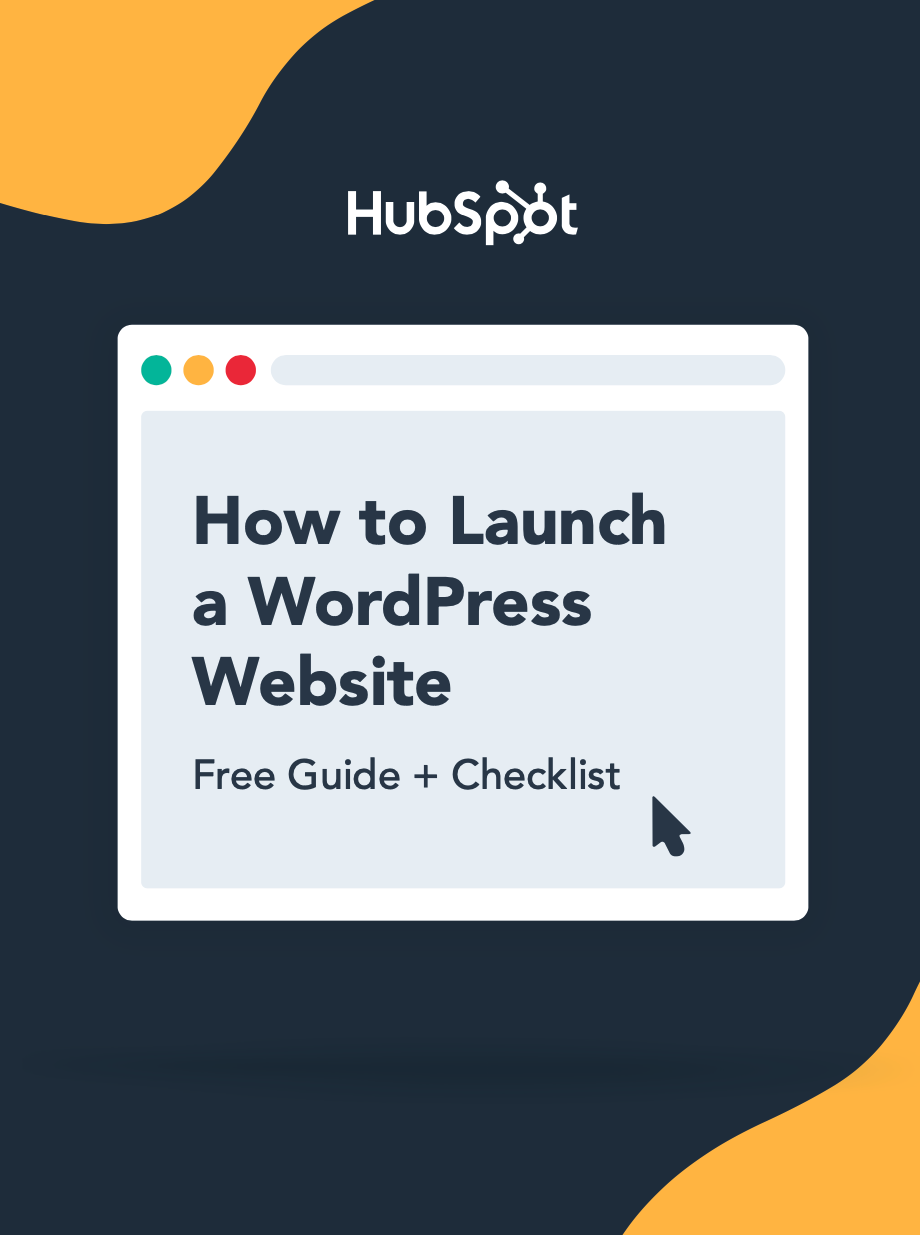If I ever decide to launch an ecommerce website, I want to make sure I’m choosing the best platform to set it up for success from the start. WordPress is one the first platforms that comes to mind, so I set out to learn more about how to make an ecommerce website with WordPress.
What Makes WordPress Great for Ecommerce
I’ve used WordPress throughout my near-decade-long marketing career, so I’m familiar with its powerful capabilities as an open-source platform and website builder. However, my experience has primarily involved using its CMS to manage and publish blogs.
As I set out to create an online shop, I want to stick with a platform I’m familiar with. However, I also want to make sure WordPress is a good platform for an ecommerce business. So, I asked a couple of experts about their experience.
Here’s what makes WordPress a great platform for ecommerce businesses, according to people who have used it.
Ease of Use
For those without technical experience, navigating the website-building aspect of an ecommerce shop can be a challenge. Not only do you have to make your website visually appealing, but your ecommerce site must also function as a store. This includes having an inventory and operating a checkout, among other complex features.
With WordPress drag-and-drop themes, you can design a fully functional ecommerce website without creating a single line of code.
This approachable UI appeals to non-coders like Adam Young, the CEO of Event Tickets Center, an online ticket marketplace.
“As someone who has struggled with other website-building programs, WordPress's drag-and-drop feature is revolutionary,” says Young. “This simple solution streamlines product management and empowers users like me to easily customize the store's design.”
Customizable Themes
Choosing the right theme for your ecommerce website sets the tone for the rest of your experience. A theme is like a pre-built template that you can install and customize. Fortunately, there are over 20,000 WordPress themes to choose from, and nearly half of them are free.
As long as you choose a theme that’s designed for ecommerce, you’re off to a great start.
There are a few elements that make for a successful ecommerce theme. First, your theme should make it easy to visually display your store’s products.
Another element to look out for is a seamless checkout process. The last thing you want is for a customer to add to their cart but not complete the purchase because the process was confusing or unclear.
“I've noticed through personal experience that choosing an ecommerce-focused WordPress theme is like building a digital storefront,” states Young. “These themes are built to smoothly combine online transaction elements like user-friendly product lists, shopping carts, and checkout processes.”
He continues, “A WordPress ecommerce theme quietly guides customers to the ‘Add to Cart’ button and ‘Checkout’ page beyond aesthetics. It helps convert casual visitors into delighted consumers.”
Plugins that Scale
Another unique feature of WordPress is its plugins.
Plugins are like apps. Instead of learning to code when you want to add a new feature or function to your website, you can choose from one of the thousands of plugins WordPress offers. Plugins make it easy to scale your business.
“WordPress's scalability has helped me build and expand an online business,” according to Michael Wall, founder of Codefixer, a software development and growth agency. “As a tiny firm with a few products, the platform easily supported my product inventory growth.”
He adds, “Plugins were crucial to the success of my WordPress ecommerce website.”
When it comes to ecommerce plugins, specifically, Wall recommends WooCommerce (we’ll get into more details about WooCommerce later in this article).
“WooCommerce changed the game by centralizing product management, order processing, payments, and shipping operations,” says Wall. “This ecommerce plugin integrated effortlessly with my WordPress site, making daily operations easy.”
Large Community and Expert Network
WordPress was founded 20 years ago, making it one of the most established website platforms out there. And because WordPress is used by 43.1% of all websites, it’s safe to assume that you or someone you know has experience using the platform.
Whether you’re looking to outsource website development or connect with other website owners for advice, you won’t have to look far. The WordPress community is vast and knowledgeable. You can check out a freelance marketplace like Upwork to hire WordPress developers or join an online group to chat with WordPress experts.
How to Make an Ecommerce Website with WordPress
To help walk through the steps when making an ecommerce website on WordPress, I’m going to set up my own sample website as an example.
For this example, I’m going to use WordPress.com to set up a basic ecommerce site. You can sign up for a free plan to get started or a paid one if you want access to more features right away.

Step 1. Choose a domain name.
If you’re like me and you regularly purchase domains when you think of a business idea, then you can probably skip this step since you likely already have a domain name ready for your ecommerce website.
Once you choose your web hosting provider (which we’ll discuss more in the next step), you can connect your domain name.
If you haven’t already purchased a domain name for your ecommerce business, you can use a site like GoDaddy to see if your name is available and buy it. You can also do this through some web hosting providers.
On WordPress.com and on hosting sites like Bluehost, for example, you can get a free domain name set up when you sign up for a paid plan. This is convenient if you want to check off multiple steps at once.
Here’s what that looks like on Bluehost:

Step 2. Choose a web hosting provider.
I briefly mentioned this in the previous step, but the next step is to choose a web hosting provider.
A web host differs from a domain name in that the web host is the platform where your website will live; the domain name acts as the address. Your ecommerce website must have both a domain name and a web hosting provider if you want it to be accessible to people on the internet (AKA, your customers).
Your web host may already be built into the website platform you choose, or you may have to sign up for a provider separately and connect the two.
There are several WordPress web hosting options, including:
- HostGator.
- Bluehost.
- WP Engine.
- DreamHost.
- GoDaddy.
- Nexcess.
Step 3. Install WordPress.
Depending on which hosting platform you choose, this step may already be done for you. If you set up your site directly through WordPress like I did, you don’t need to take the extra step to install it. If you opt for a host like Bluehost, the installation is automatically done for you.
Here’s what this step looked like for me when I went through WordPress.com to make my ecommerce website:

I was given the option to personalize my site with an icon, a site name, and a brief description. These elements will be displayed at the top of my website homepage. They can also be changed at a later date.
Step 4. Select a theme.
Now for the fun part: choosing a theme.
Themes are ready-made website designs. Your website theme not only sets the visual tone for your website but also determines its structure.
This is why it’s important to select a theme that’s designed specifically for an online store. There are certain features that an ecommerce website template needs, including product pages and a payment solution.
WordPress offers a handful of free and paid ecommerce templates like the ones below:
You can also visit a template library like ThemeForest to purchase a WordPress theme. ThemeForest offers over 1,500 WordPress themes designed for ecommerce and is updated weekly.

For my ecommerce website, I want to go with something cleaner and minimal to get started. I know I can customize it and add more personality once I get a feel for my brand style, so choosing this simple theme will help provide a basic yet functional foundation.

Step 5. Install an ecommerce plugin.
The final step in setting up your ecommerce website on WordPress is to set up an ecommerce plugin. WordPress plugins are essentially like apps. There’s a plugin for everything your site may need, from SEO to contact forms to ecommerce.
Ecommerce plugins are designed to help you set up and run your online shop. With the right ecommerce plugins, you can manage your inventory, enable product reviews, integrate email marketing, process transactions, and more.
Here are some of the top ecommerce plugins for WordPress:
- WooCommerce. WooCommerce is one of the most popular ecommerce platforms, with over 3.5 million online stores using it. The open-source plugin is free to integrate with your website and offers powerful features you need to run and scale an online store, including multi-channel selling, seamless shipping, and an optimized checkout.
- WP EasyCart. WP EasyCart is another all-in-one ecommerce plugin that makes it easy to turn your WordPress site into an online shop in just a few steps.
- Easy Digital Downloads. As the name suggests, this plugin is best if you’re selling digital products like ebooks or online courses.
For my example site, I’ll choose WooCommerce since it’s easily accessible from the WordPress dashboard and has high ratings.

3 Tips for Setting Up Your WordPress Site
Based on my experience building a sample ecommerce site, here are a few tips I would share with anyone else wanting to set up their own website on WordPress.
Use an all-in-one platform.
If you’re starting your ecommerce business from scratch, I’d recommend using a platform where you can get a domain name, web hosting, and WordPress set up all in one fell swoop.
Doing this helps simplify the process and limits the number of steps — not to mention, reduces stress — involved with setting up an ecommerce website.
Upgrade right away.
While one of the benefits of using WordPress for your ecommerce website is that you can easily get started for free, I’d recommend upgrading to a paid plan as soon as you can.
Some of the ecommerce functions are limited on many of these platform’s free plans. For instance, if you want to use the WooCommerce plug-in, it requires a paid plan.
Using a free plan may not be an issue if your website is a side project and you don’t anticipate many sales. But if you plan to scale your ecommerce business anytime in the near future, it’s worth upgrading your setup so you can get familiar with WordPress ecommerce features.
Explore the themes.
When I set up my sample site, I chose a simple theme without looking into all of my options. If I were to set up a real ecommerce website, I’d spend more time browsing the different ecommerce themes available to find one that will grow with my business.
There are thousands of WordPress themes to choose from, whether directly from the WordPress repository or from third-party template libraries. You can also hire a developer or agency to create a completely custom theme for you.
Getting Started
If you’re serious about scaling your ecommerce business, put some consideration into your theme from the start.
WordPress has proven to be a powerful and reliable website-building platform for two decades.
With its customization, ease of use, and ecommerce-specific plugins designed to scale, WordPress has all of the functions and features you need to get started to build an ecommerce website that stands out.
WordPress Website



![How to become a WordPress developer [+ tips from WCEU speaker Paul Bearne]](https://53.fs1.hubspotusercontent-na1.net/hubfs/53/59_How%20to%20Become%20a%20WordPress%20Developer.png)








